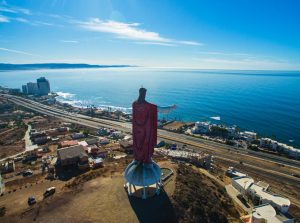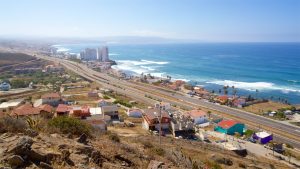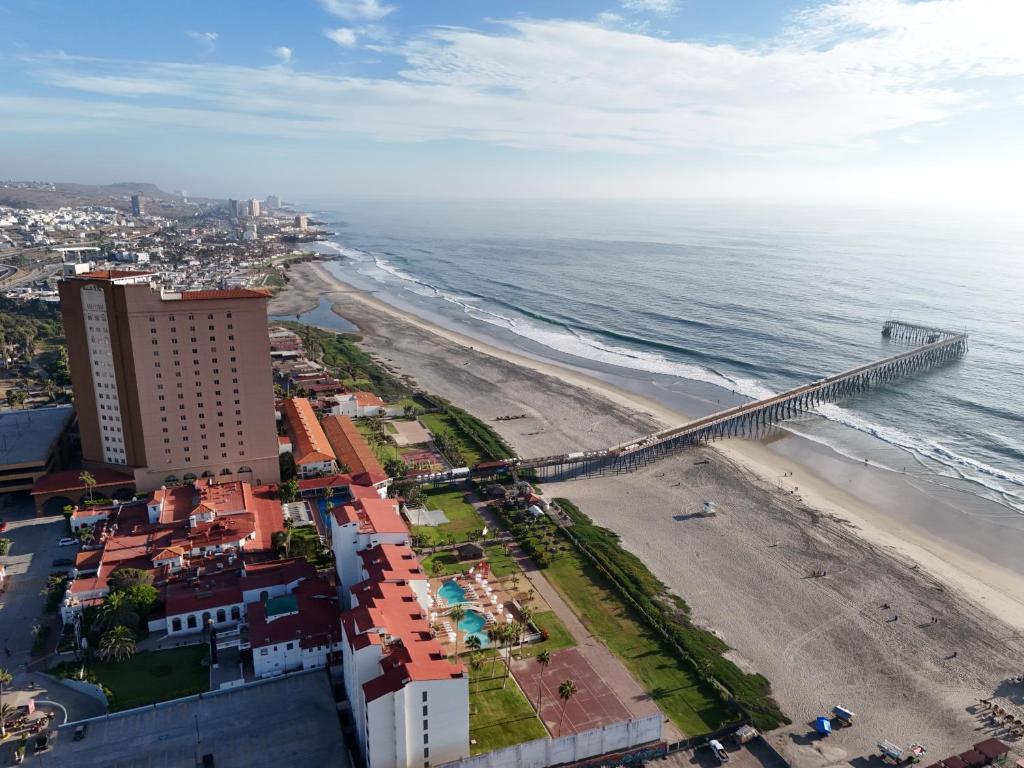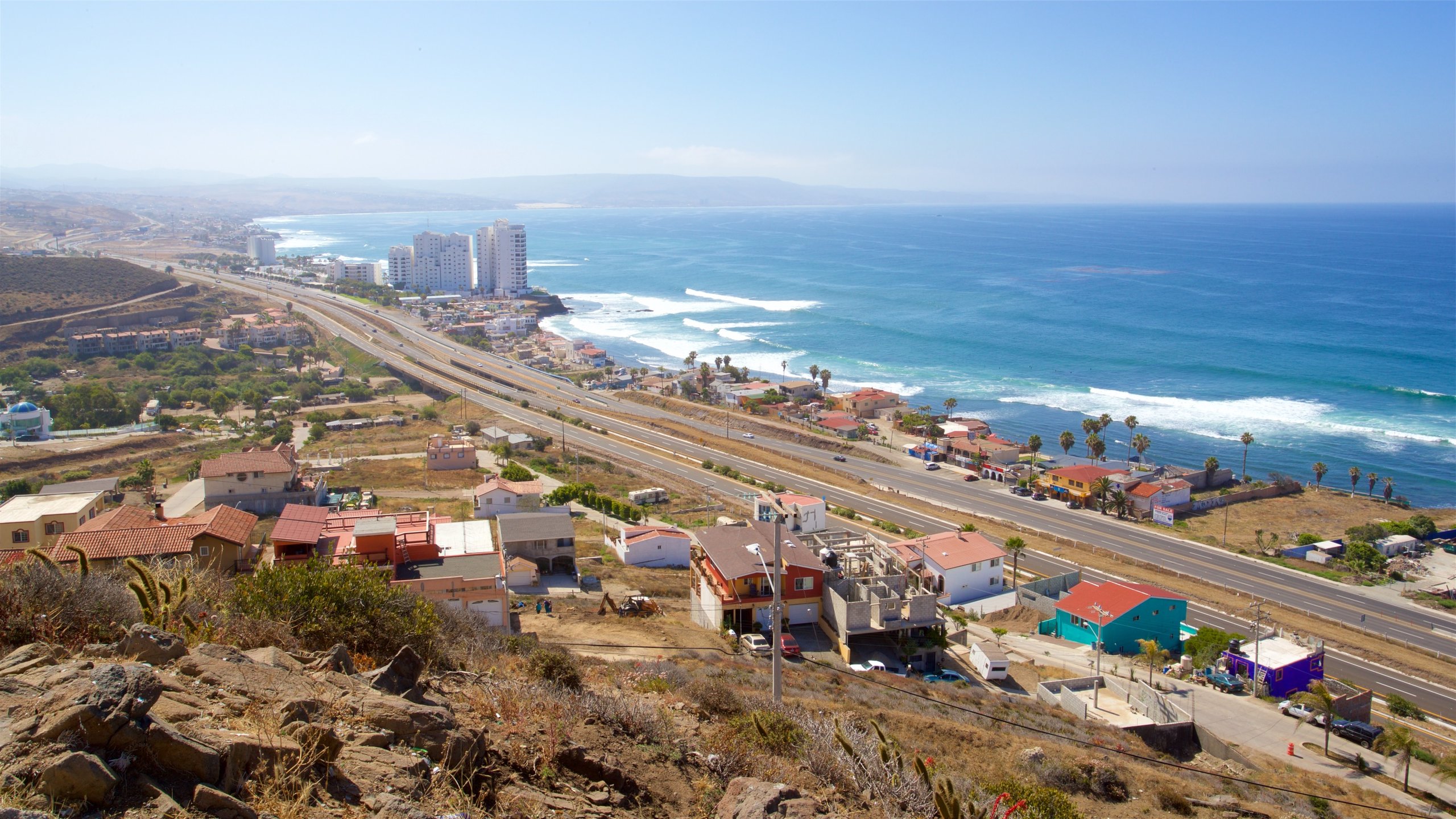- Overview
- Itinerary
- History
- Best Time
- Gallery
- FAQ
The coastal region of Baja California, Mexico, offers a diverse and captivating experience, combining stunning beaches, vibrant cities, and a renowned wine country. This alluring trio of destinations - Rosarito, Ensenada, and Valle de Guadalupe - promises a unique blend of relaxation, adventure, and culinary delights.
Rosarito, a lively beach town just south of the US border, welcomes you with its warm hospitality, vibrant nightlife, and beautiful coastline. Stroll along the sandy shores, indulge in fresh seafood at oceanfront restaurants, or try your luck at the casinos. For the adventurous, horseback riding, surfing, and ATV tours offer thrilling ways to explore the surrounding landscape.
Ensenada, a bustling port city with a rich history, boasts a charming blend of Mexican and Mediterranean influences. Explore the waterfront promenade, visit the iconic Bufadora blowhole, or indulge in the city's thriving culinary scene, known for its fresh seafood and Baja Med cuisine. Wine enthusiasts can venture into the nearby Valle de Guadalupe, Mexico's premier wine region, for tastings and tours at renowned wineries.
Valle de Guadalupe, nestled in the rolling hills of Baja California, is a haven for wine lovers and foodies. Discover a world of award-winning wines, from bold reds to crisp whites, produced by passionate vintners. Sample farm-to-table cuisine at acclaimed restaurants, or explore the region's natural beauty with hiking, biking, or horseback riding excursions.
Together, Rosarito, Ensenada, and Valle de Guadalupe offer a diverse and unforgettable experience, combining coastal charm, urban excitement, and wine country allure. Whether you're seeking relaxation, adventure, or culinary indulgence, this captivating trio has something to entice every traveler.
Ensenada, Rosarito, and Valle de Guadalupe Excursions (4 Days)
Day 1 (Thursday)
- Departure from San Diego bus terminal.
- Cross via Tijuana.
- Arrive in Ensenada and check into the hotel.
- Evening welcome meeting.
Day 2 (Friday)
- 8:00 to 10:00 am: Breakfast on property.
- Board bus at 10:30 am for a tour of Rosarito.
- Lunch in Rosarito.
- Visit local attractions and shops.
- Return to the hotel in the evening.
Day 3 (Saturday)
- 8:00 to 9:30 am: Breakfast.
- Board bus and head to Valle de Guadalupe.
- Wine tasting tour.
- Lunch at a local winery.
- Return to the hotel in the evening.
Day 4 (Sunday)
- 8:00 am: Breakfast at the hotel.
- Check out and board bus back to San Diego.
- Arrival in San Diego in the afternoon.
-
History: Rosarito, Ensenada & Valle de Guadalupe
The coastal region of Baja California has a rich and diverse history, shaped by indigenous cultures, Spanish colonization, and a unique blend of international influences.
Rosarito:
- Indigenous Roots: The Kumeyaay people were the original inhabitants of the Rosarito area, leaving behind rock paintings and archaeological evidence of their ancient way of life.
- Spanish Exploration: In the 16th century, Spanish explorers arrived in the region, establishing missions and settlements. Rosarito Beach, named after a local legend, became a popular destination for missionaries and travelers.
- 20th Century Development: Rosarito experienced a surge in development in the mid-20th century, with the construction of hotels, resorts, and casinos. It became a popular getaway for Hollywood celebrities and tourists seeking a vibrant beach destination.
Ensenada:
- Indigenous Heritage: The Kiliwa people were the original inhabitants of the Ensenada area, leaving behind a legacy of rock art and archaeological sites.
- Spanish Colonization: In 1542, Juan Rodríguez Cabrillo, a Portuguese explorer sailing for Spain, landed in Ensenada, marking the first European contact with the region. The city was officially founded in 1882 and quickly became an important port and commercial center.
- Russian Influence: In the early 20th century, a group of Russian immigrants settled in the nearby Valle de Guadalupe, bringing with them their winemaking traditions and expertise. Their influence can still be felt in the region's thriving wine industry.
Valle de Guadalupe:
- Dominican Mission: The Valle de Guadalupe was initially settled by Dominican missionaries in the 19th century, who established a mission and began cultivating grapes for wine production.
- Russian Pioneers: The arrival of Russian immigrants in the early 20th century revolutionized the region's wine industry. They introduced new grape varieties and winemaking techniques, laying the foundation for the Valle de Guadalupe's reputation as Mexico's premier wine region.
- Modern Wine Country: Today, the Valle de Guadalupe boasts over 150 wineries, producing a diverse range of award-winning wines. The region has also become a culinary destination, with farm-to-table restaurants and gourmet food experiences.
Together, the histories of Rosarito, Ensenada, and Valle de Guadalupe tell a fascinating story of cultural exchange, innovation, and the enduring allure of this unique coastal region.
Best Time to Visit Rosarito, Ensenada & Valle de Guadalupe
The coastal region of Baja California enjoys a Mediterranean climate, with warm, sunny summers and mild winters. While each destination offers its own unique appeal throughout the year, certain seasons provide optimal conditions for specific activities and experiences.
Rosarito:
- Summer (June-August): This is the peak season for Rosarito, with warm temperatures and sunny skies ideal for beach activities and water sports. The town comes alive with festivals, concerts, and a vibrant nightlife scene.
- Spring and Fall (March-May & September-November): These shoulder seasons offer pleasant weather, fewer crowds, and more affordable rates. It's a great time to enjoy outdoor activities like horseback riding, surfing, and ATV tours.
Ensenada:
- Spring and Fall (March-May & September-November): These seasons offer the most comfortable temperatures for exploring Ensenada's attractions, including the waterfront promenade, the Bufadora blowhole, and the nearby Valle de Guadalupe wine region.
- Summer (June-August): The summer months are ideal for whale watching tours, as gray whales migrate to the waters off Ensenada. The city also hosts various festivals and events during this time.
Valle de Guadalupe:
- Spring and Fall (March-May & October-November): These are the most popular times to visit the Valle de Guadalupe, as the weather is ideal for wine tasting and outdoor activities. The vineyards are lush and green, and the wineries host numerous events and festivals.
- Summer (June-August): While temperatures can be warm, the summer months offer a unique opportunity to experience the grape harvest and participate in special events at the wineries.
No matter when you choose to visit, Rosarito, Ensenada, and Valle de Guadalupe offer a diverse and unforgettable experience. The region's warm hospitality, stunning scenery, and rich cultural heritage will leave you wanting more.
Yes, a valid passport is required to enter Mexico from the United States. If you are a U.S. citizen, you do not need a visa for tourist stays up to 180 days.
Rosarito, Ensenada, and Valle de Guadalupe are generally safe for tourists. However, it's always wise to exercise caution and be aware of your surroundings. Avoid carrying large amounts of cash, stick to well-lit areas at night, and use reliable transportation services. When driving, be sure to follow local traffic laws and regulations.
The official currency is the Mexican peso (MXN). However, US dollars are widely accepted in tourist areas. It's advisable to carry some pesos for smaller purchases and transactions in local establishments.







